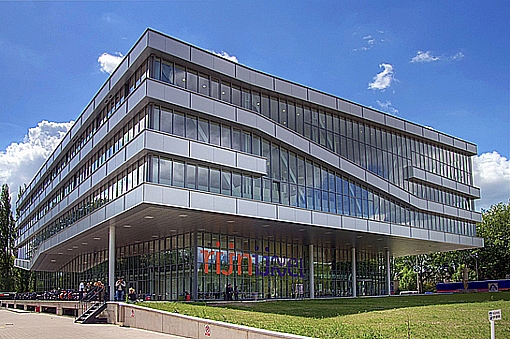
A better environment begins with steel

A better environment begins with steel

A better environment begins with steel

A better environment begins with steel

A better environment begins with steel

ROC Rhine and IJssel, Arnhem (LIAG architects and construction consultants)
Steel was the first construction material in the Netherlands for which environmental data for steel building products was documented (2003). Building with Steel and the industry collected the data and the collation was done by the consulting bureau Intron. Subsequently, IVAM Environmental Research conducted a peer review. All data are recorded in an EPD sheet that was published by Bouwen met Staal in 2003. The EPD makes an LCA possible, based on ISO 14040 "Environmental management - Life cycle assessment - Principles and framework" and ISO 14041 "Environmental management - Life cycle assessment - Goal and scope definition and inventory analysis". The EPD sheet was also the basis of the development of NEN 8006 (environmental performance of buildings).
As explained in "The steel production process", steel products are produced in different ways. Therefore the CO2 emission associated with a steel beam is not equivalent to that of a steel sandwich panel for example. Steel building products are also classified into groups of products with similar environmental profiles. The five product groups are:
All products are manufactured by BF, EAF or a combination of both. A quantity of 1000 kg (1 tonne) was used for each product group.
Table: Production routes for various product groups.
| Product group | Production route |
| Heavy-duty applications | 900 kg steel beam (10% BF and 90% EAF) + 100 kg steel plates (BF) |
| Medium-duty applications | 1000 kg hot rolled steel strip (100% BF) |
| Light-duty applications | 1000 kg Sendzimir galvanized steel strip (100% BF) |
| Internal walls | 1000 kg cold rolled steel strip (100% BF) |
| Roof and facade cladding | 1000 kg organically coated steel strip (100% BF) |
The EPD gives the environmental impacts of the five product groups in the following life cycle stages: production from raw materials, transport to site, fabrication & erection, removal from the structure (demolition) and waste disposal. Use, maintenance and replacements are not included.
The environmental profiles are determined in accordance with the MRPI Guide version 1.2 (MRPI ~ EPD) and version 1.2 of the EPD testing protocol:
Environmental profile for structural steel
| Environmental profile for structural steel: data quality = good | ||||||
| Theme | Unit | Structural steel for heavy-duty applications |
Structural steel for medium-duty applications |
Structural steel for light-duty applications |
Structural steel for interior walls |
Structural steel for roof and facade cladding |
| Toxicity to humans | kg 1.4DB | 2.9E+01 | 4.4E+01 | 5.1E+01 | 8.5E+01 | 3.8E+01 |
| Abiotic exhaustion | kg Sb | 2.8E+00 | 5.5E+00 | 5.6E+00 | 6.9E+00 | 4.4E+00 |
| Ecotoxicity of water (fresh water) | kg 1.4DB | 5.7E+00 | 8.4E+00 | 1.0E+01 | 1.6E+01 | 7.5E+00 |
| Ecotoxicity of sediment (fresh water) | kg 1.4DB | 9.2E+00 | 1.4E+01 | 1.6E+01 | 2.7E+01 | 1.2E+01 |
| Terrestrial ecotoxicity | kg 1.4DB | 1.7E-01 | 2.6E-01 | 5.9E-01 | 6.0E-01 | 2.1E-01 |
| Acidification | kg SO2 | 3.0E+00 | 5.2E+00 | 5.5E+00 | 7.3E+00 | 4.2E+00 |
| Over fertilisation | kg PO4-- | 4.2E-01 | 6.54E-01 | 7.8E-01 | 1.1E+00 | 5.9E-01 |
| Greenhouse effect | kg CO2 | 4.8E+02 | 9.4E+02 | 9.5E+02 | 1.2E+03 | 7.6E+02 |
| Photochemical oxidant formation | kg ethyl | 5.1E-01 | 8.0E-01 | 1.0E+00 | 1.4E+00 | 7.4E-01 |
| Ozone layer depletion | kg CFC11 | 1.1E-04 | 1.6E-04 | 2.0E-04 | 3.2E-04 | 1.5E-04 |
Environmental Profiles for five groups of structural steel (source: EPD Sheet, Bouwen met Staal, 2003).